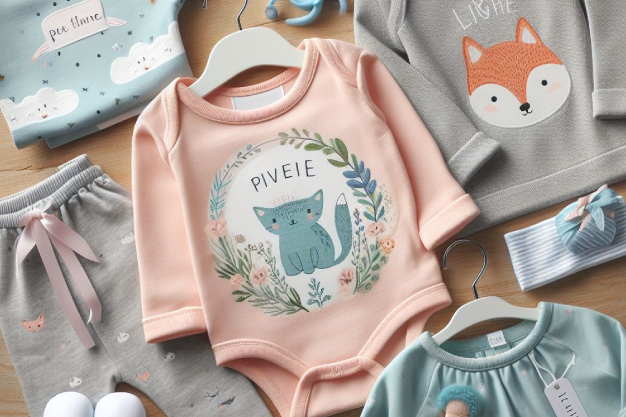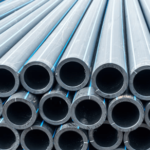IMARC Group’s latest report, titled “Baby Apparel Market Report by Product (Outerwear, Underwear, and Others), Material (Cotton, Wool, Silk), Distribution Channel (Online, Offline), Application (0-12 Months, 12-24 Months, 2-3 Years), End User (Girls, Boys), and Region 2025-2033”, offers a comprehensive analysis of the baby apparel market trends. The report also includes competitor and regional analysis, along with a breakdown of segments within the industry. the global baby apparel market size reached USD 227.0 Billion in 2024. Looking forward, IMARC Group expects the market to reach USD 350.3 Billion by 2033, exhibiting a growth rate (CAGR) of 4.43% during 2025-2033. The market is experiencing steady growth driven by the growing awareness among individuals about the importance of safe and organic materials to prevent allergies and skin irritations, the thriving e-commerce sector, and increasing social media influence.
Request Free Sample Report (Exclusive Offer on this report): https://www.imarcgroup.com/baby-apparel-market/requestsample
Emerging Consumer Preferences and Fashion Trends:
The baby apparel market is witnessing a significant transformation, driven by evolving consumer preferences, increased awareness of baby comfort, and the growing influence of social media. Parents today are not only concerned with the quality and functionality of clothing but also seek fashionable, Instagram-worthy outfits that reflect their personal taste and social status. This shift has led to a rise in demand for designer baby wear, themed clothing, and mini-me fashion, where parents dress their children in styles that mirror adult fashion trends. Brands are now innovating to meet this demand by collaborating with influencers, launching exclusive collections, and integrating seasonal fashion cycles into babywear design. Moreover, there’s a marked inclination toward gender-neutral apparel that supports inclusivity and simplifies shopping for modern families. This evolution in fashion sensibilities is fostering a competitive landscape, compelling manufacturers to invest in trend forecasting and design agility to stay ahead of consumer expectations.
Growth Driven by Rising Birth Rates and Increasing Disposable Income:
The baby apparel market is experiencing robust growth due to demographic and economic factors, particularly in developing and emerging economies. With increasing birth rates in countries across Asia-Pacific and parts of Africa, along with rising disposable income among middle-class families, there is a growing willingness to spend on high-quality, branded baby clothing. This trend is further fueled by urbanization, dual-income households, and a growing culture of gifting premium baby products. Parents today are prioritizing their children’s comfort, safety, and style, which translates into increased expenditure on baby wear across all age groups—newborns, infants, and toddlers. Moreover, government incentives and parental leave policies in several countries are indirectly boosting consumer spending, as families feel more financially secure to invest in baby-related products. These factors are not only expanding the consumer base but also enabling brands to explore tiered product offerings that cater to both value-oriented and premium market segments.
Technological Advancements and Sustainability Trends in Manufacturing:
Sustainability and technology are reshaping the production and consumption landscape of baby apparel. With heightened awareness of environmental impact, parents are becoming more selective, favoring eco-friendly fabrics, organic cotton, and sustainable production methods. This has encouraged brands to adopt green manufacturing practices, utilize biodegradable packaging, and offer recyclable or reusable baby garments. Additionally, the integration of technology—such as smart textiles, antimicrobial fabrics, and clothing that adapts to temperature—is gaining traction. These innovations not only enhance functionality and safety but also align with health-conscious parenting choices. Furthermore, advancements in supply chain technology and digital retail platforms are streamlining the customer journey, from personalized shopping experiences to faster delivery and hassle-free returns. As sustainability becomes a key differentiator in consumer decision-making, manufacturers that prioritize environmental responsibility and tech-enabled product development are well-positioned to capitalize on future market opportunities.
Leading Key Players Operating in the Baby Apparel Industry:
- Bed Bath & Beyond Inc
- Burberry
- Carter’s Inc
- Cotton On Group
- Gianni Versace S.r.l
- H & M Hennes & Mauritz AB
- Hanesbrands Inc
- Industria de Diseño Textil S.A
- Ralph Lauren Corporation
- The Children’s Place Inc
- Truworths
Trends Shaping the Baby Apparel Market:
The baby apparel market is evolving at a rapid pace, influenced by a mix of social, technological, and environmental factors that are reshaping consumer behavior and brand strategies. One of the most prominent trends is the shift toward organic and sustainable clothing options. As parents become more conscious of the materials they put on their children’s skin, demand for organic cotton, bamboo-based fabrics, and non-toxic dyes has surged. Brands that emphasize ethical sourcing and transparent supply chains are gaining trust and loyalty among environmentally-aware consumers. Another significant trend is the digital transformation of the babywear shopping experience. E-commerce platforms, mobile apps, and social commerce are driving sales, with brands leveraging AI-driven recommendations, virtual try-ons, and influencer marketing to engage parents more effectively.
Additionally, customization and personalization are becoming key selling points, allowing customers to create unique outfits tailored to their baby’s needs and preferences. This trend aligns with the broader consumer desire for individuality and expression, even in children’s fashion. The baby apparel market is also seeing increased interest in functional clothing—such as easy-to-wear designs, expandable garments, and skin-friendly materials—that support both the baby’s comfort and parents’ convenience. With these multi-faceted trends converging, brands that blend innovation, sustainability, and user-centric design are likely to lead the market into its next phase of growth.
Ask Analyst for Instant Discount and Download Full Report with TOC & List of Figure: https://www.imarcgroup.com/baby-apparel-market
Key Market Segmentation:
Breakup by Product:
- Outerwear
- Underwear
- Others
Breakup by Material:
- Cotton
- Wool
- Silk
Cotton holds the largest market share.
Breakup by Distribution Channel:
- Online
- Offline
Offline represents the leading market segment.
Breakup by Application:
- 0-12 Months
- 12-24 Months
- 2-3 Years
0-12 months exhibit a clear dominance in the market.
Breakup by End User:
- Girls
- Boys
Boys represents the biggest market share.
Breakup by Region:
- North America (United States, Canada)
- Asia Pacific (China, Japan, India, Australia, Indonesia, Korea, Others)
- Europe (Germany, France, United Kingdom, Italy, Spain, Others)
- Latin America (Brazil, Mexico, Others)
- Middle East and Africa (United Arab Emirates, Saudi Arabia, Qatar, Iraq, Other)
North America leads the market, accounting for the largest baby apparel market share.
Key Highlights of the Report:
- Market Performance (2019-2024)
- Market Outlook (2025-2033)
- Porter’s Five Forces Analysis
- Market Drivers and Success Factors
- SWOT Analysis
- Value Chain
- Comprehensive Mapping of the Competitive Landscape
About Us:
IMARC Group is a leading market research company that offers management strategy and market research worldwide. We partner with clients in all sectors and regions to identify their highest-value opportunities, address their most critical challenges, and transform their businesses.
IMARC’s information products include major market, scientific, economic and technological developments for business leaders in pharmaceutical, industrial, and high technology organizations. Market forecasts and industry analysis for biotechnology, advanced materials, pharmaceuticals, food and beverage, travel and tourism, nanotechnology and novel processing methods are at the top of the company’s expertise.
Contact Us:
IMARC Group
134 N 4th St. Brooklyn, NY 11249, USA
Email: sales@imarcgroup.com
Tel No:(D) +91 120 433 0800
United States: +1-631-791-1145
Also Read – https://fastpanda.in/



